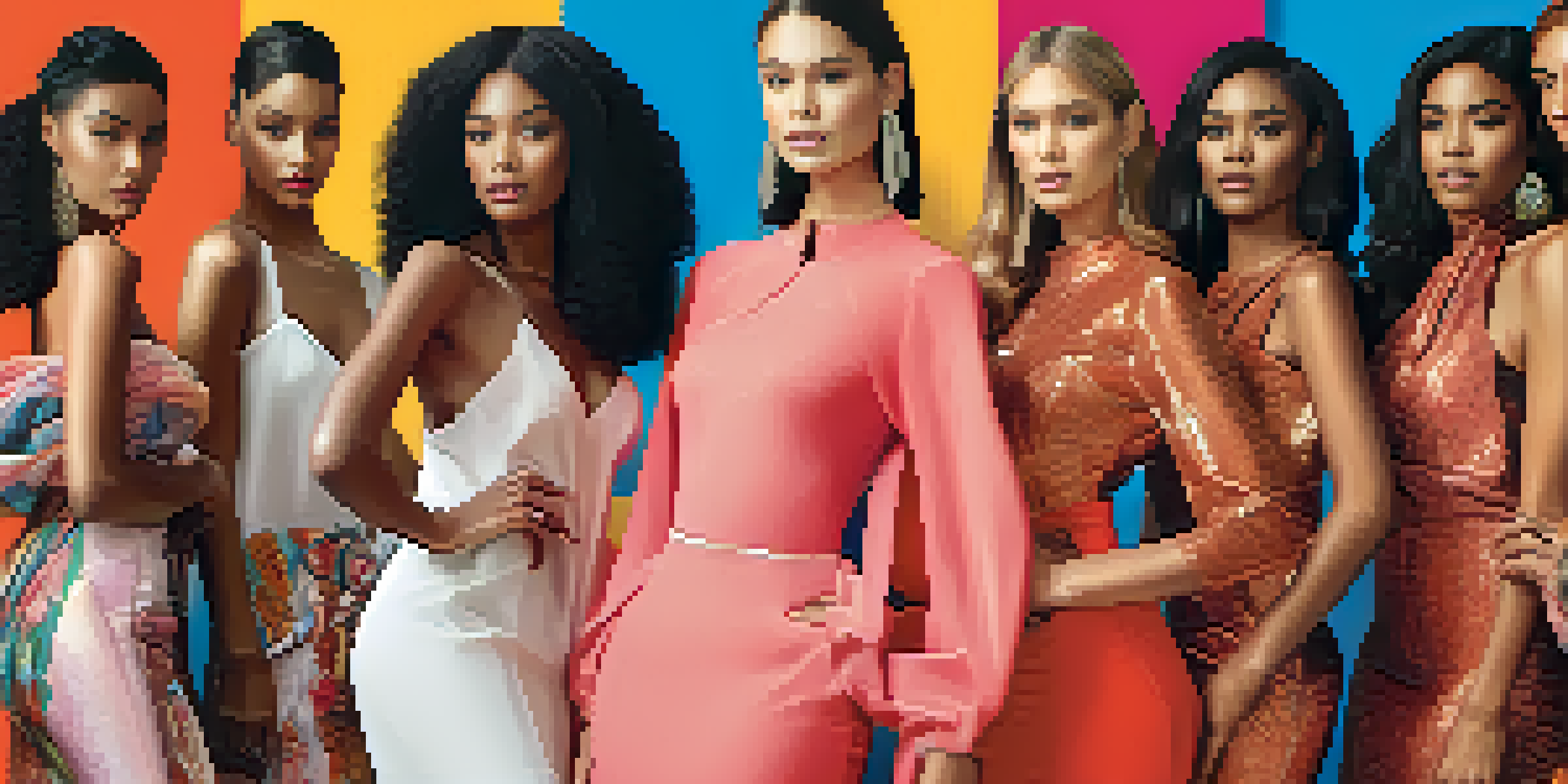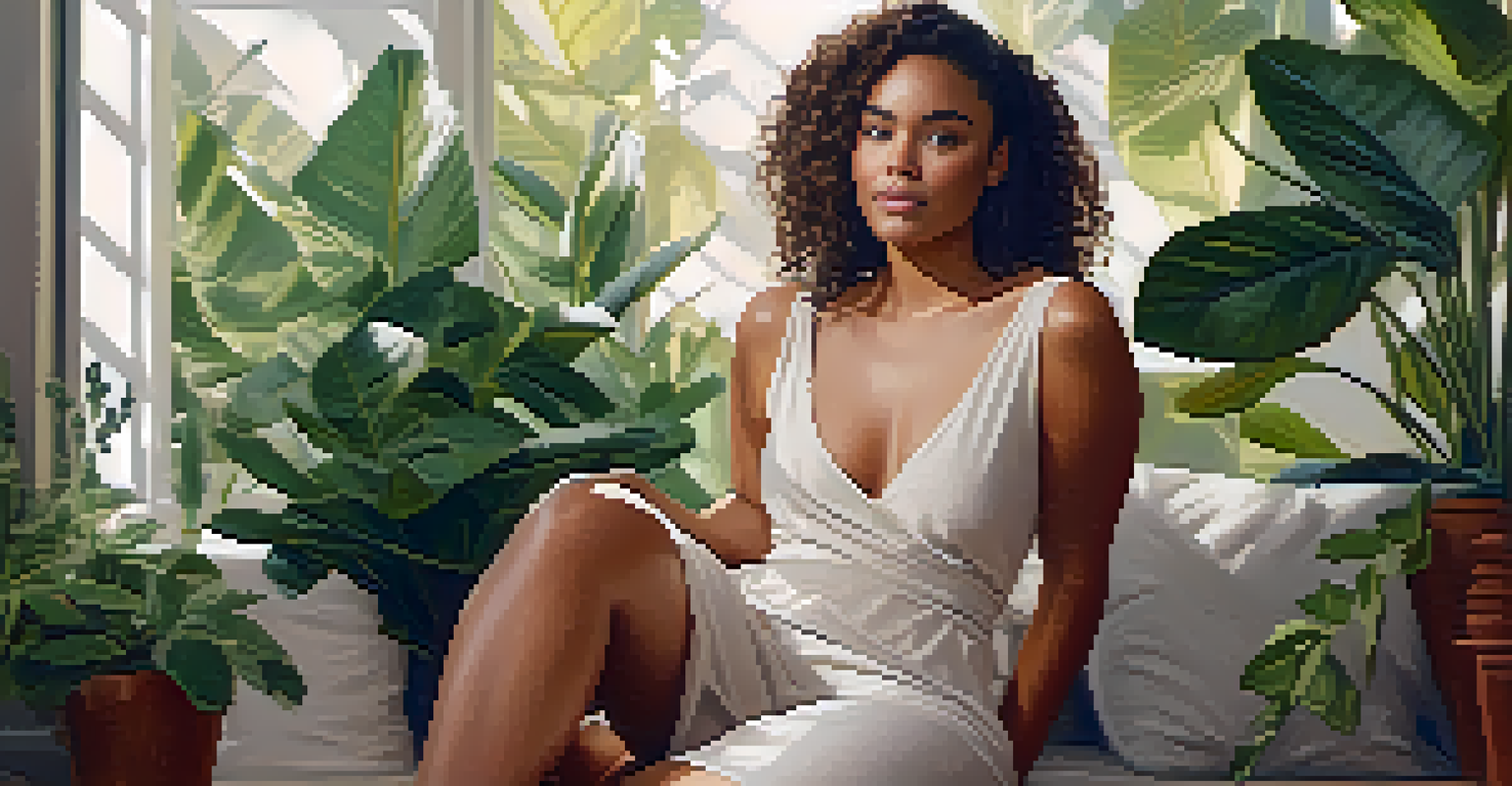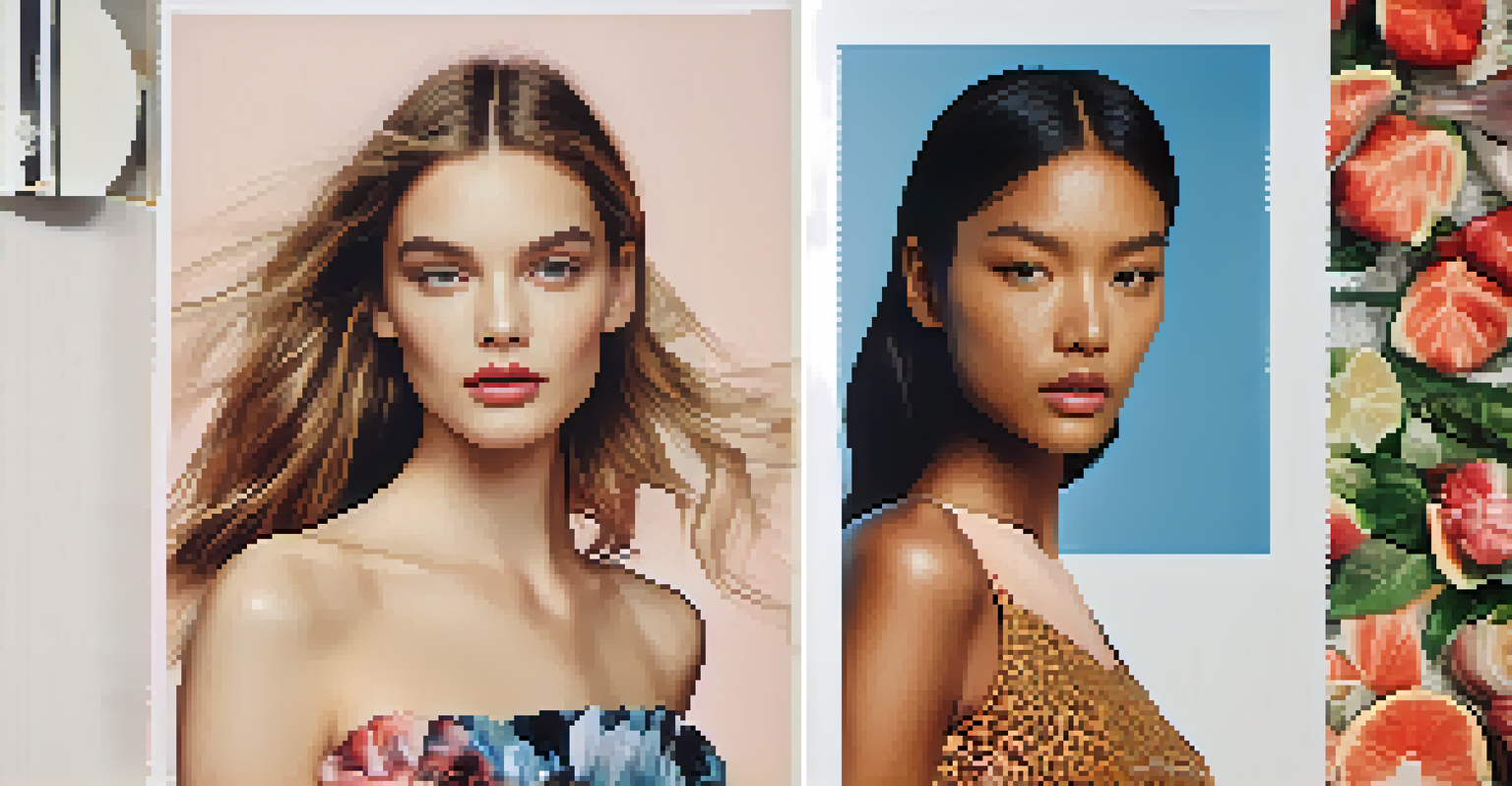Fashion Magazines and Their Role in Defining Beauty Standards

The Evolution of Beauty Standards in Fashion Magazines
Fashion magazines have played a pivotal role in shaping beauty standards throughout history. From the classic looks of the 1950s to the diverse representations seen today, these publications reflect societal values and ideals. Each era's aesthetic often mirrors cultural shifts, highlighting the dynamic nature of beauty.
Beauty begins the moment you decide to be yourself.
In the early days, magazines often promoted a narrow definition of beauty, predominantly featuring white, thin models. This limited perspective reinforced stereotypes and created unrealistic expectations for many readers. However, as society began to embrace diversity, magazines gradually began to include a broader range of body types, skin tones, and styles.
This evolution not only influences what we consider beautiful but also challenges readers to rethink their own perceptions. By showcasing a variety of looks, magazines empower individuals to embrace their unique features, fostering a more inclusive understanding of beauty.
The Role of Advertising in Shaping Beauty Perceptions
Advertising within fashion magazines has a significant impact on beauty perceptions. Brands leverage the influence of magazines to promote their products, often using aspirational imagery that defines what beauty should look like. This marketing strategy can create a powerful link between consumerism and self-worth.

Ads often feature models who embody the magazine's ideal beauty standard, reinforcing a specific look or lifestyle. This portrayal can lead readers to associate certain products with achieving beauty, resulting in a cycle of desire and consumption. Consequently, readers may feel pressured to conform to these ideals to feel validated.
Diversity in Beauty Representation
Fashion magazines are increasingly showcasing a broader range of body types, skin tones, and styles, reflecting a more inclusive understanding of beauty.
However, there is a growing movement among consumers who are becoming more critical of these portrayals. Many readers are now questioning the authenticity of advertisements, prompting magazines to reconsider their marketing strategies and embrace more genuine representations of beauty.
How Social Media is Transforming Fashion Magazine Standards
The rise of social media has dramatically shifted how beauty standards are defined and disseminated. Platforms like Instagram and TikTok allow individuals to share their own styles and beauty tips, often challenging traditional magazine narratives. This democratization of beauty means that anyone can become a trendsetter.
The most beautiful thing you can wear is confidence.
As influencers and everyday users post content that celebrates various body types and styles, the influence of fashion magazines is being reexamined. Readers are no longer solely relying on print media for beauty inspiration; they are seeking authenticity and relatability in their content. This shift encourages magazines to adapt and diversify their representations.
Social media has also given rise to movements that promote body positivity and self-acceptance, further challenging outdated beauty standards. As these conversations flourish online, fashion magazines are increasingly held accountable for their portrayals of beauty, leading to more inclusive content.
The Influence of Celebrity Culture on Beauty Standards
Celebrities have long been icons of beauty in fashion magazines, often setting trends that many aspire to emulate. Their presence can amplify certain beauty standards, as readers look to them for inspiration on how to look and feel their best. This connection between celebrity culture and beauty ideals creates a powerful narrative in magazines.
However, this influence can be a double-edged sword. While some celebrities promote positive messages about self-love and authenticity, others may reinforce unrealistic beauty expectations through heavily edited images. This disparity can leave readers feeling inadequate if they don't measure up to their favorite stars.
Social Media's Impact on Standards
The rise of social media has democratized beauty, allowing individuals to challenge traditional magazine narratives and seek authenticity in representation.
As readers become more aware of the impact celebrities have on their self-image, many are calling for more transparency in how these images are presented. This demand for authenticity is pushing fashion magazines to reconsider their editorial choices and celebrate a more realistic portrayal of beauty.
The Impact of Diversity and Inclusivity in Fashion Magazines
In recent years, there has been a significant push for diversity and inclusivity in fashion magazines. This movement aims to represent a wider range of ethnicities, body types, and gender identities, challenging the traditional norms of beauty. By showcasing diverse models, magazines are redefining what it means to be beautiful.
This shift not only reflects the changing demographics of society but also resonates with readers who seek representation. When individuals see themselves reflected in media, it fosters a sense of belonging and validation. Magazines that embrace diversity empower their audience to celebrate their uniqueness.
Moreover, inclusive representations can inspire positive conversations about beauty and self-acceptance. By normalizing a variety of looks, magazines contribute to a more holistic understanding of beauty, encouraging readers to embrace their own identities.
How Fashion Magazines Address Mental Health and Body Image
Increasingly, fashion magazines are acknowledging the impact of their content on mental health and body image. Many have begun to feature articles that focus on self-care, body positivity, and mental wellness, recognizing the pressures that come with beauty standards. This shift represents a more compassionate approach to beauty.
By discussing topics like eating disorders, self-esteem, and the importance of mental health, magazines are helping to destigmatize these issues. This open dialogue encourages readers to seek help and fosters a supportive community. It also allows individuals to recognize that beauty is not solely about appearance but encompasses overall well-being.
Mental Health Awareness in Fashion
Fashion magazines are beginning to address the impact of beauty standards on mental health, promoting self-care and body positivity.
This new focus not only benefits readers but also holds magazines accountable for their influence. As they prioritize mental health, fashion publications can contribute to a more positive narrative around beauty, promoting messages of self-love and acceptance.
The Future of Beauty Standards in Fashion Magazines
Looking ahead, the future of beauty standards in fashion magazines appears to be one of continued evolution. As cultural conversations surrounding gender, race, and body image gain momentum, magazines will likely adapt to reflect these changes. This adaptability is crucial for remaining relevant in a rapidly changing world.
Readers are increasingly demanding authenticity and diversity in the content they consume. As a result, magazines that prioritize these values are likely to gain loyalty from their audience. This shift may lead to a richer variety of beauty representations that celebrate individuality rather than conformity.

Ultimately, the future of beauty standards in fashion magazines hinges on their ability to listen to their audience. By fostering an inclusive environment and promoting positive messages, magazines can redefine beauty for generations to come, shaping a more compassionate and accepting culture.